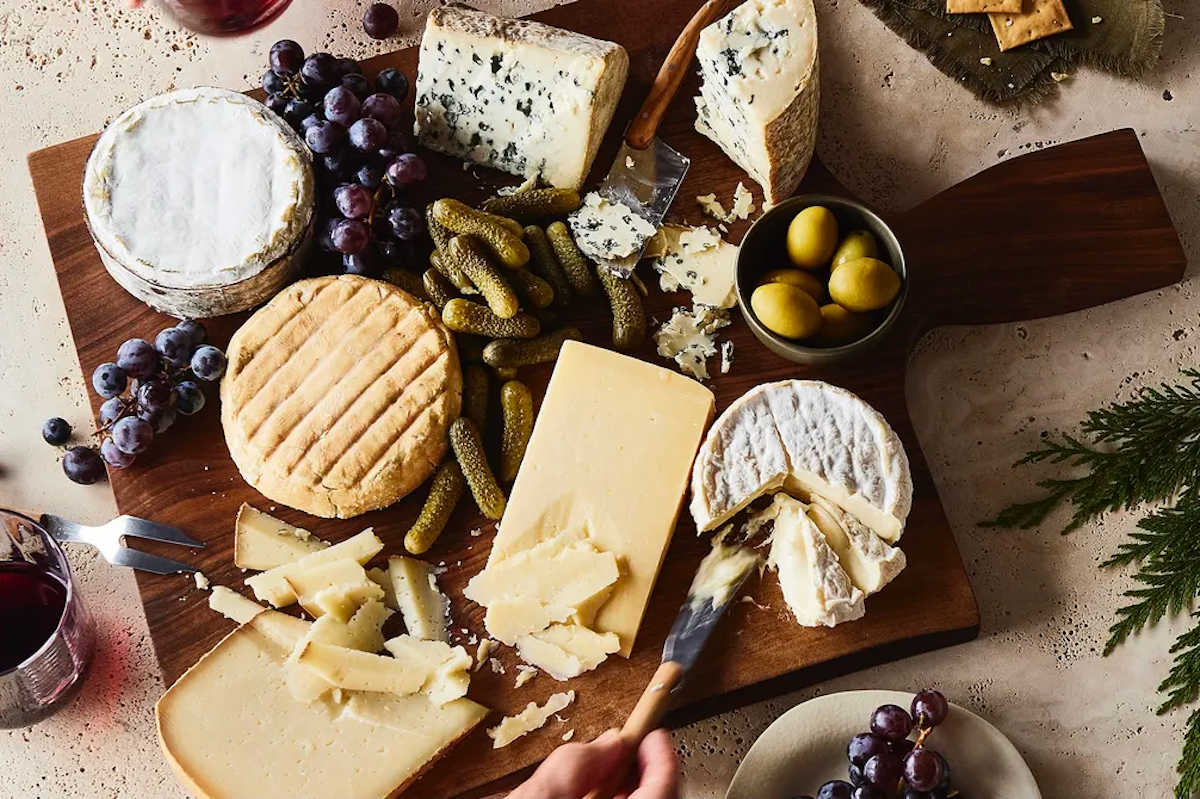Cutting cheese is an art form in itself. Depending on the way you slice and dice your dairy, the texture and taste of each piece can make a big impact. Take soft-ripened goat cheese, for example. The interior is fresh and tangy while the outer creamline has buttery notes of earth and mushrooms. You want to ensure the cheese cut captures both of those flavor elements and textures in one bite — using the right type of cheese knife can help with that.
It's also important to consider the age of your cheese, the type of milk it's made with, the cheesemaking style, and the rind when deciding what knife to use to cut it and how to shape it. Cheese knives can range in size, so keep a few different styles on hand for cutting multiple varieties of cheese. The type of knife you need depends on the type of cheese and how it's served. Are you cutting a large wedge of cheese into smaller pieces for guests, or are you leaving it whole so guests can cut however much they want themselves? From slim-blade knives for soft cheeses to a fork-tipped spear, here are some of our favorite cheese knives for cutting and serving.
Prep knives
Soft cheese knife/Slim blade knife
You'll save a lot of time and stress by prepping bloomy-rind and soft cheeses with this knife. Ever cut into a creamy camembert and have the entire cheese stick to your knife? That's the result of using the wrong type of knife. For most bloomy rinded cheeses, such as brie or camembert, I suggest using a soft cheese knife or a slim blade knife. A soft cheese knife has holes in the blade, which leaves gaps in the knife's surface area to prevent cheese from sticking. A slim blade knife has a long and narrow sharp blade, which achieves the same purpose.
Once sliced, soft cheeses like brie, camembert, triple creme, and taleggio tend to turn ooey-gooey at room temperature, so don't pre-cut a wheel far in advance of serving. To avoid this altogether, leave soft cheeses whole for guests to cut.
Another tool to cut cheese with is a cheese wire, which is perfect for creating clean slices of semi-soft such as mozzarella and blue to semi-hard cheese, such as young gouda and young manchego. With a cheese wire, you can slice a variety of shapes depending on the type cheese — disks, cubes, rectangles, and triangles. With long, round logs like Bucheron, disks are a great cutting method. If the wedge is triangular shaped, cutting it into smaller triangles with the wire works just as well as a sharp chef's knife.
This tool is also great for breaking down larger cheese formats into smaller, more palatable wedges, such as large wheels of gouda, blocks of Comté, and wheels of Gruyère.
A large, sharp knife is great for slicing semi-hard cheeses like Gruyère, aged gouda, cheddar, and Comté. The slicing technique, however, depends on the cheese. Sometimes with an aged gouda, you may run into cheese crystals, or natural breaks in the cheese. This will make it difficult to slice it into uniform triangles, so I like to follow the breaks to make uneven rectangular slices. Similarly with cheddar, the curds tend to fall apart easily while slicing, so I'll create "rustic crumbles" with my knife by sticking it vertically into the cheese block and twisting my wrist to create small bite-sized pieces for serving.
Serving knives
This is a dull knife with a rounded tip and wide face, making it easy to serve, smear, and spread soft cheeses with bloomy rinds (like brie, triple creme, camembert), soft-ripened goat cheese, and fresh chèvre.
Look familiar? This knife is great for cutting semi-hard cheeses like gouda, cheddar, Gruyère, and Emmental. The blade is sharp enough to cut through dense cheeses, while the pronged tip can be used to pick up individual pieces.
A spade knife is used for hard, aged cheese, like Parmigiano-Reggiano, Grana Padano, and pecorino Romano. The small sharp, pointed edge is great for chipping away at firmer cheeses, making for bite-sized pieces.
If you're serving semi-hard cheese whole, the flat knife makes it easy for guests to create clean, rectangular cuts. I also love cutting and spreading a creamy blue cheese, since the wide blade covers a large surface area.
When serving a cheese plate, lay the knives near the cheese they're meant to cut. You can even stick them directly in their designated cheese to get your guests started. If you don't have these types of knives, use butter knives for soft cheese and steak knives for harder cheeses.




Shares